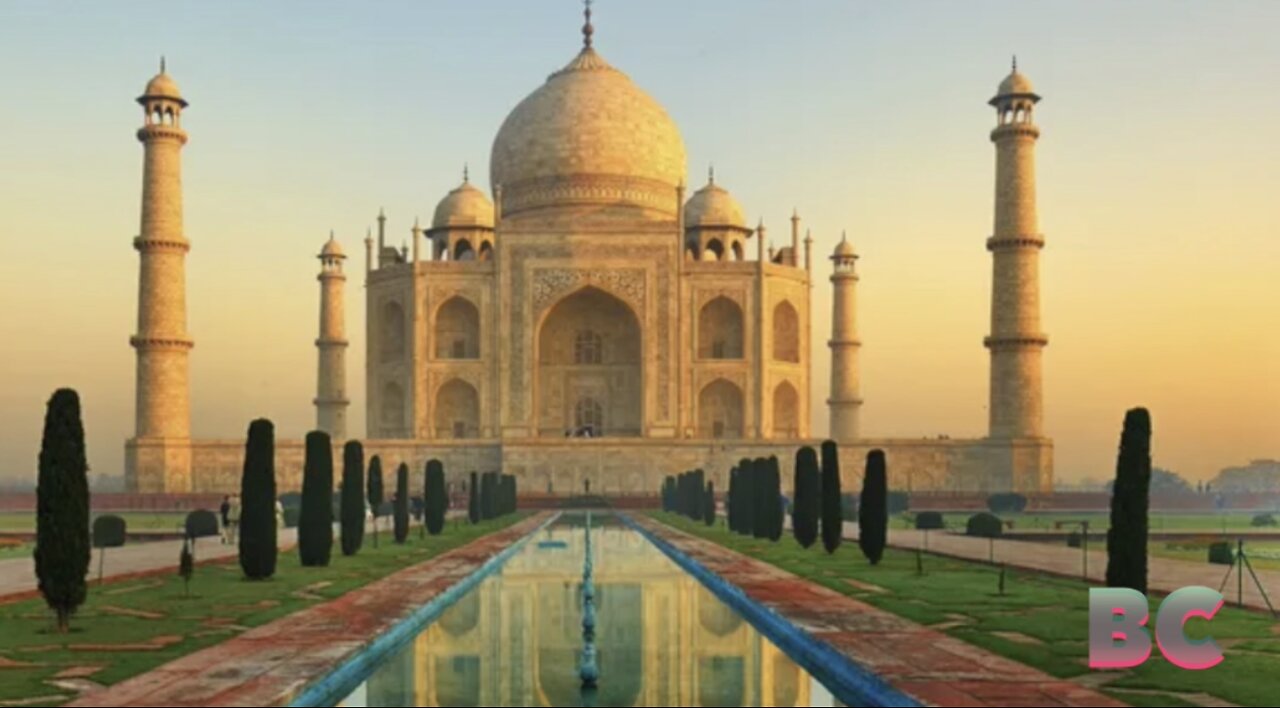Premium Only Content

The Timeless Beauty of the Taj Mahal: A Monument to Eternal Love
Nestled on the banks of the Yamuna River in Agra, India, the Taj Mahal stands as an unparalleled testament to love, beauty, and architectural brilliance. Often referred to as the "Crown of Palaces," this iconic white marble mausoleum is a UNESCO World Heritage Site and one of the New Seven Wonders of the World. Built in the 17th century by the Mughal emperor Shah Jahan, the Taj Mahal is a symbol of eternal love and devotion, capturing the hearts and imaginations of millions of visitors from around the globe.
Commissioned by Shah Jahan in 1632 in memory of his beloved wife Mumtaz Mahal, who died during childbirth, the Taj Mahal took more than two decades to complete. The construction involved the talents of skilled artisans, architects, and laborers who painstakingly crafted the monument's intricate details. The mausoleum was completed in 1653 and has since become a masterpiece of Mughal architecture, blending Persian, Indian, and Islamic influences.
The Taj Mahal's architectural splendor lies in its symmetrical design, meticulous craftsmanship, and the brilliant use of white Makrana marble. The central structure is crowned by a large, onion-shaped dome, which is flanked by four smaller domes at each corner. The complex features a stunning garden, water channels, reflecting pools, and a grand entrance gate adorned with calligraphy and intricate floral designs.
The central tomb houses the graves of Shah Jahan and Mumtaz Mahal, with their cenotaphs elegantly adorned with precious stones and intricate carvings. The surrounding minarets not only add to the architectural balance but also serve a functional purpose, acting as buttresses to support the main structure.
The Taj Mahal is rich in symbolism, reflecting the Mughal fascination with perfection and the divine. The garden, divided into four quadrants by reflecting pools, represents the four rivers of paradise in Islamic tradition. The central pool reflects the image of the Taj Mahal, creating a stunning mirror effect that enhances the monument's visual appeal.
The calligraphy adorning the Taj Mahal is a remarkable feature, with verses from the Quran inscribed on the exterior walls. The use of inlay work with semi-precious stones such as lapis lazuli, jasper, and jade adds a touch of opulence, creating a mesmerizing play of light and color.
Despite its enduring beauty, the Taj Mahal faces challenges from environmental pollution, industrial emissions, and the impact of millions of visitors each year. Efforts have been made to address these issues, including restrictions on vehicular traffic near the monument and conservation projects to mitigate the effects of pollution.
The Taj Mahal continues to stand as an eternal symbol of love, drawing visitors from all corners of the world. Its architectural magnificence, coupled with the poignant love story behind its creation, makes it a timeless wonder that has transcended centuries. As a living testament to the artistic and cultural heritage of India, the Taj Mahal remains a source of inspiration, inviting us to marvel at the enduring power of love and human creativity.
Links for B.C.
Visit My Website
https://bcbegley.com
Follow Me On Facebook
https://www.facebook.com/B.C.Begley
Subscribe To My Patreon
https://www.patreon.com/bcbegley
Watch Me On YouTube
https://www.youtube.com/channel/UCGoUf-QQTlTN-BIh3ERCE9A
Follow Me On Twitter
https://twitter.com/BC_News1
Watch Me On Rumble
https://rumble.com/c/c-280191
Follow Me On Gab
https://gab.com/BC_Begley
-
 0:51
0:51
B.C. Begley
50 minutes agoMH370: search for missing Malaysia Airlines flight resumes after 11 years
10 -
 1:25:29
1:25:29
Sarah Westall
6 hours agoX-Files True History, Project Blue Beam, Cabal Faction War w/ Former FBI Agent John DeSouza
64.9K5 -
 7:03:49
7:03:49
Dr Disrespect
13 hours ago🔴LIVE - DR DISRESPECT - NEW PC VS. DELTA FORCE - MAX SETTINGS
153K26 -
 49:04
49:04
Lights, Camera, Barstool
1 day agoIs The Monkey The Worst Movie Of The Year?? + Amazon Gets Bond
62.3K4 -
 24:19
24:19
Adam Carolla
1 day agoDiddy’s Legal Drama Escalates, Smuggler Caught Hiding WHAT? + Philly Eagles & The White House #news
90.8K16 -
 10:12
10:12
Mike Rowe
2 days agoClint Hill: What A Man. What A Life. | The Way I Heard It with Mike Rowe
106K10 -
 1:31:52
1:31:52
Redacted News
8 hours agoBOMBSHELL! This is war! FBI whistleblowers reveal Epstein files being destroyed? | Redacted News
176K369 -
 48:55
48:55
Candace Show Podcast
9 hours agoSTOP EVERYTHING. They FINALLY Mentioned ME In The Blake Lively Lawsuit! | Candace Ep 152
154K127 -
 1:02:51
1:02:51
In The Litter Box w/ Jewels & Catturd
1 day agoWhere are the Epstein Files? | In the Litter Box w/ Jewels & Catturd – Ep. 750 – 2/26/2025
108K87 -
 1:59:06
1:59:06
Revenge of the Cis
10 hours agoLocals Episode 198: Suits
90.5K12